When designing a Japandi kitchen, I try to start with a neutral color palette.
This could be white or gray walls, combined with natural wood tones for your furniture and cabinets.
The end goal is to create a harmonious blend of Scandinavian warmth and Japanese minimalist interior design.
So, I aim for open, spacious layouts that allow for easy movement and functionality.
Each piece of Japandi style furniture and Japandi decor should be carefully chosen for its aesthetic and functional value.
And try to avoid clutter and unnecessary items! If you’re in an apartment and designing a Japandi kitchen – you’ll need all the surface space you can get away with.
It’s great if you can incorporate natural elements where possible too.
You could try a bamboo screen, a few potted plants, or natural stone countertops for example.
This is the connection to nature – it’s a key element of Japandi style.
Lastly, think carefully about your lighting early on.
Aim for plenty of natural light, supplemented by carefully chosen Japandi light fixtures that add warmth and coziness to your space.
Here are some ideas for each individual aspect of your Japandi kitchen.
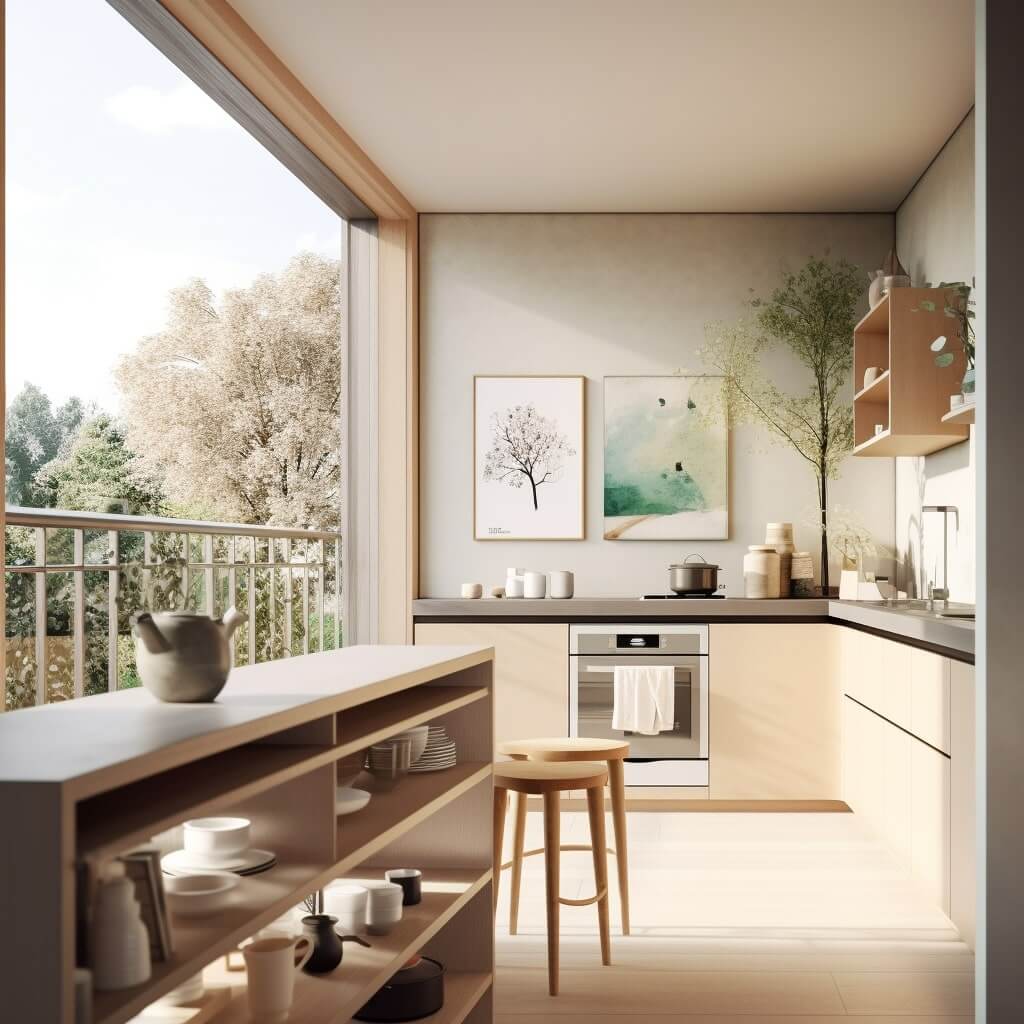
Japandi Kitchen Layout
The layout of your Japandi kitchen should prioritize functionality and flow.
Your kitchen should be easy to navigate, with a logical layout that makes cooking and cleaning as efficient as possible – I find this helps with wellness and peace around the home.
I encourage an open layout that allows for easy movement between your kitchen and other areas of your Japandi house.
I find this not only creates a sense of spaciousness but also creates a more communal, inclusive atmosphere.
In terms of placement, the “work triangle” concept – positioning your sink, stove, and refrigerator in a triangle layout – can be a way to ensure efficiency.
It minimizes the need for excessive movement while cooking, which I think aligns well with the functional aspect of Japandi design.
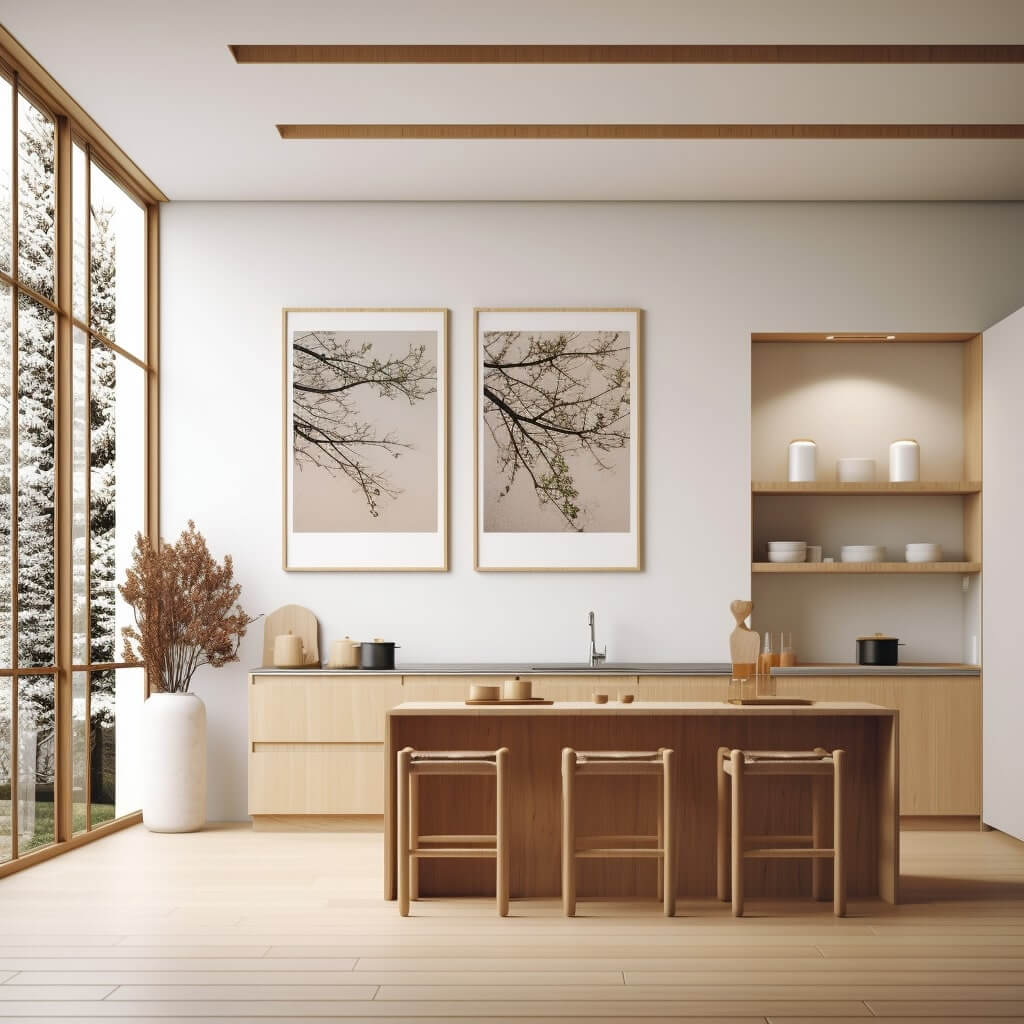
Japandi Kitchen Countertops
When it comes to countertops in a Japandi kitchen, the spotlight is on materials that are both durable and visually appealing.
I love natural stone countertops, such as granite or quartz, especially in neutral or earthy tones.
They not only bring in the much-needed warmth but also provide a sleek, minimal look that is synonymous with Japandi style.
On the other hand, wood countertops are also great, adding a touch of organic texture to your space which I love.
Remember, the focus is on achieving a balance between minimalism and comfort, so choose countertops that are easy to maintain as well.
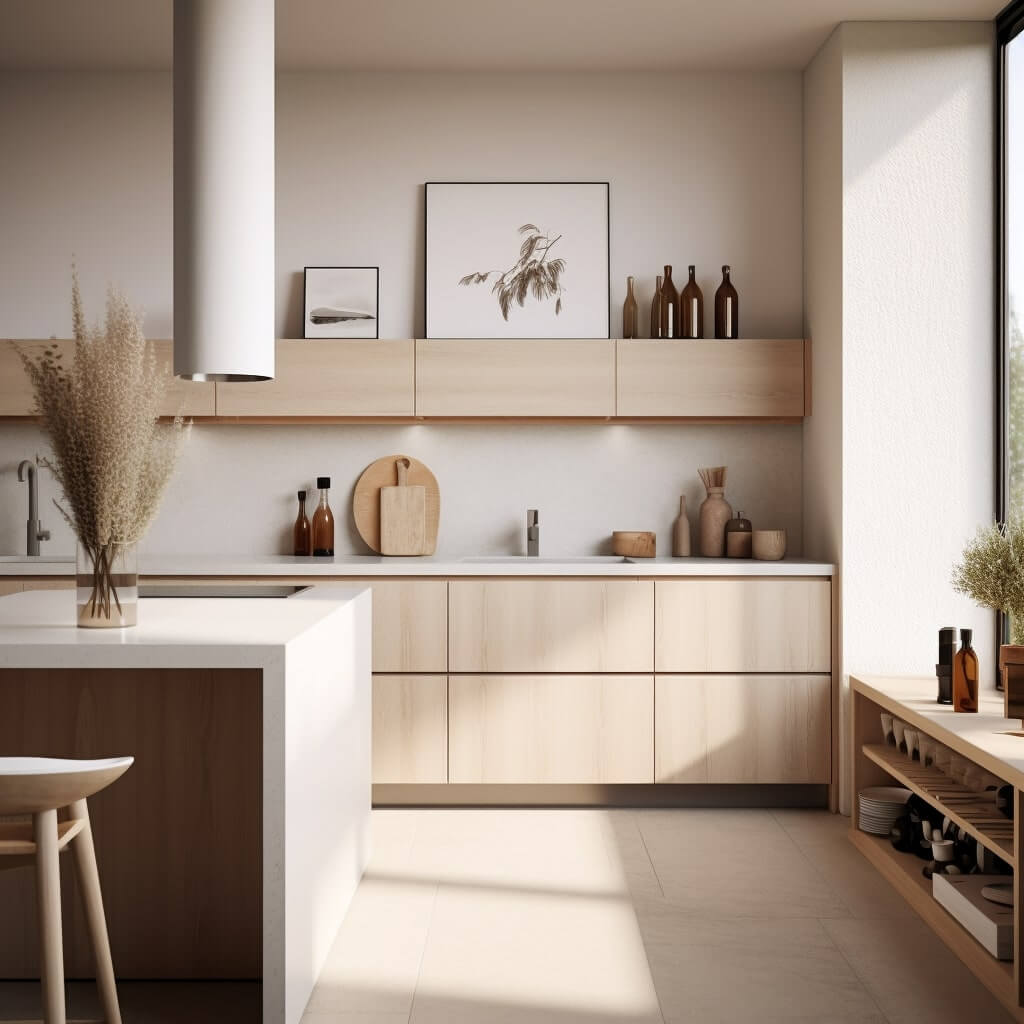
Japandi Kitchen Table
In a Japandi styled kitchen, your table is more than just a piece of furniture; it’s a communal point that brings people together.
As such, I find it needs to echo the principles of functionality and simplistic beauty that Japandi style is known for.
I look for a sturdy, well-crafted table made from natural materials like wood or bamboo.
In my opinion, the design should be clean, with simple lines, and devoid of any unnecessary frills or decorations.
And this simplicity should extend to the chairs as well.
It’s all about striking the right balance – between aesthetics and function, between minimalist and cosy, between Scandi and Japanese interior design.
Get it right, and you’ll have a kitchen that isn’t just beautiful, but also uniquely yours.
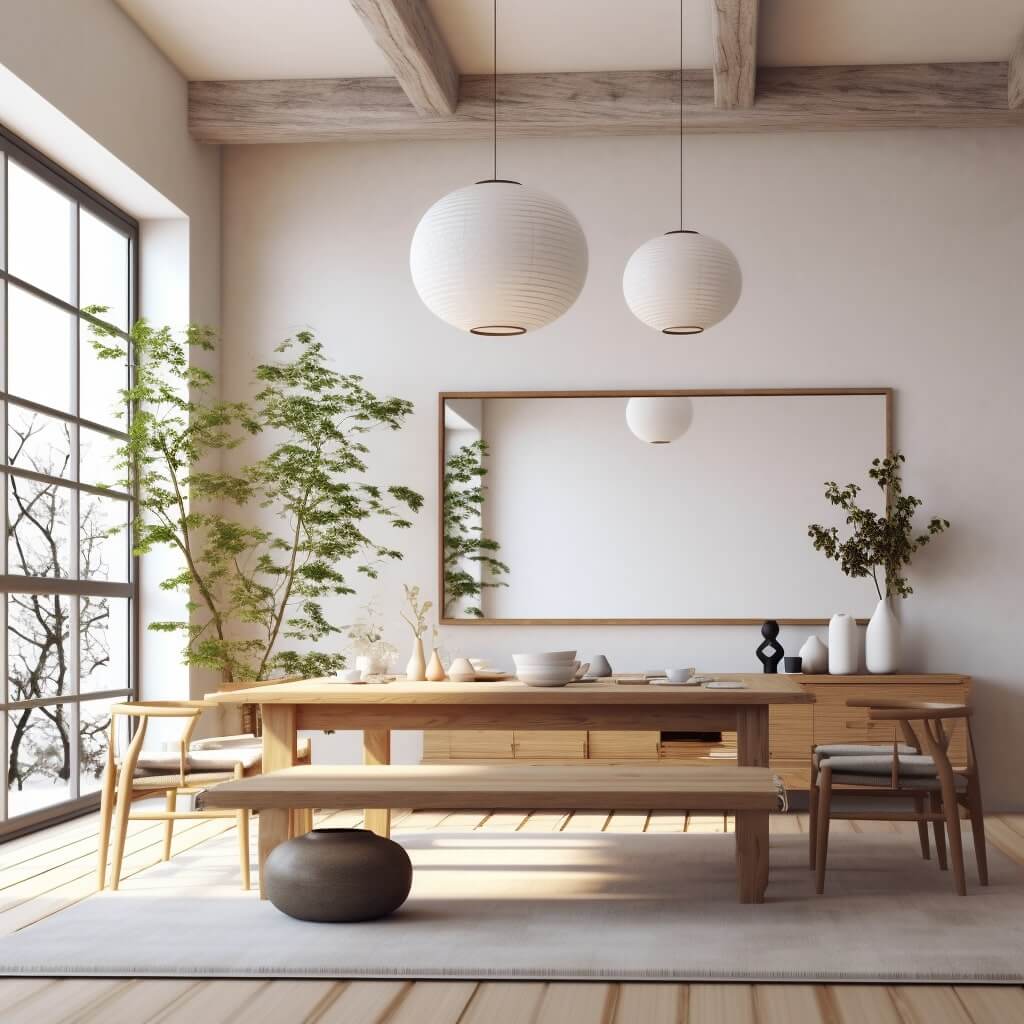
Japandi Kitchen Island
Personally, I think Japandi kitchen islands are all about functionality and streamlined design.
Your island should provide ample workspace and storage, while also serving as a focal point in the room.
A good Japandi island will offer a combination of open and closed storage – this way, you can keep your most-used items handy, while less attractive necessities can be hidden away.
I feel that the finish of the island should align with the rest of your kitchen’s color scheme.
Neutral tones are your best bet – think whites, light greys, or natural wood. If you want to add a little extra Japanese flair, consider getting a low hanging pendant light above your island.
It should stand out, but not clash with the rest of your kitchen.
For kitchen seating, Japandi bar stools are the best in my opinion. They work to bring out the minimalist simplicity of Japandi seating.
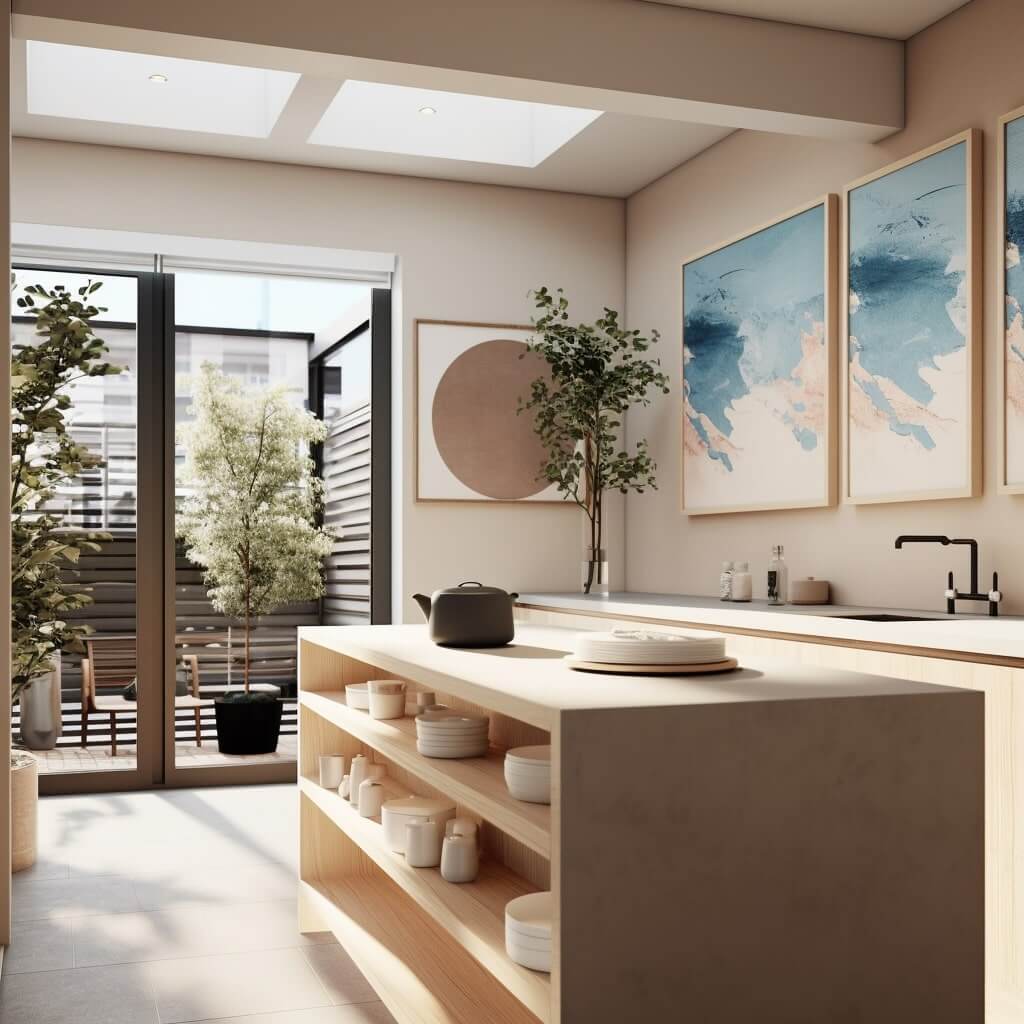
Japandi Kitchen Sinks
The sink may seem like a small detail in the grand scheme of your kitchen design, but in a Japandi kitchen, every detail matters.
For me, functionality reigns supreme.
Go for a deep, single-basin sink that will make washing large pots and pans a breeze. I love materials like stainless steel or ceramic.
Design-wise, I go for sleek lines and a simple, understated look and avoid overly ornate designs.
Japandi Kitchen Faucets
Japandi kitchen faucets should echo the same principles as above.
I look for faucets with clean lines and a minimalistic design, steering clear of any overly intricate or ornate styles.
Materials like brushed nickel or matte black are excellent choices for me. They are not only durable but also add a modern, industrial touch that complements the Japandi aesthetic.
I also love a faucet that’s user-friendly, with a high arc for filling large pots and a pull-down sprayer if possible for easy cleaning.
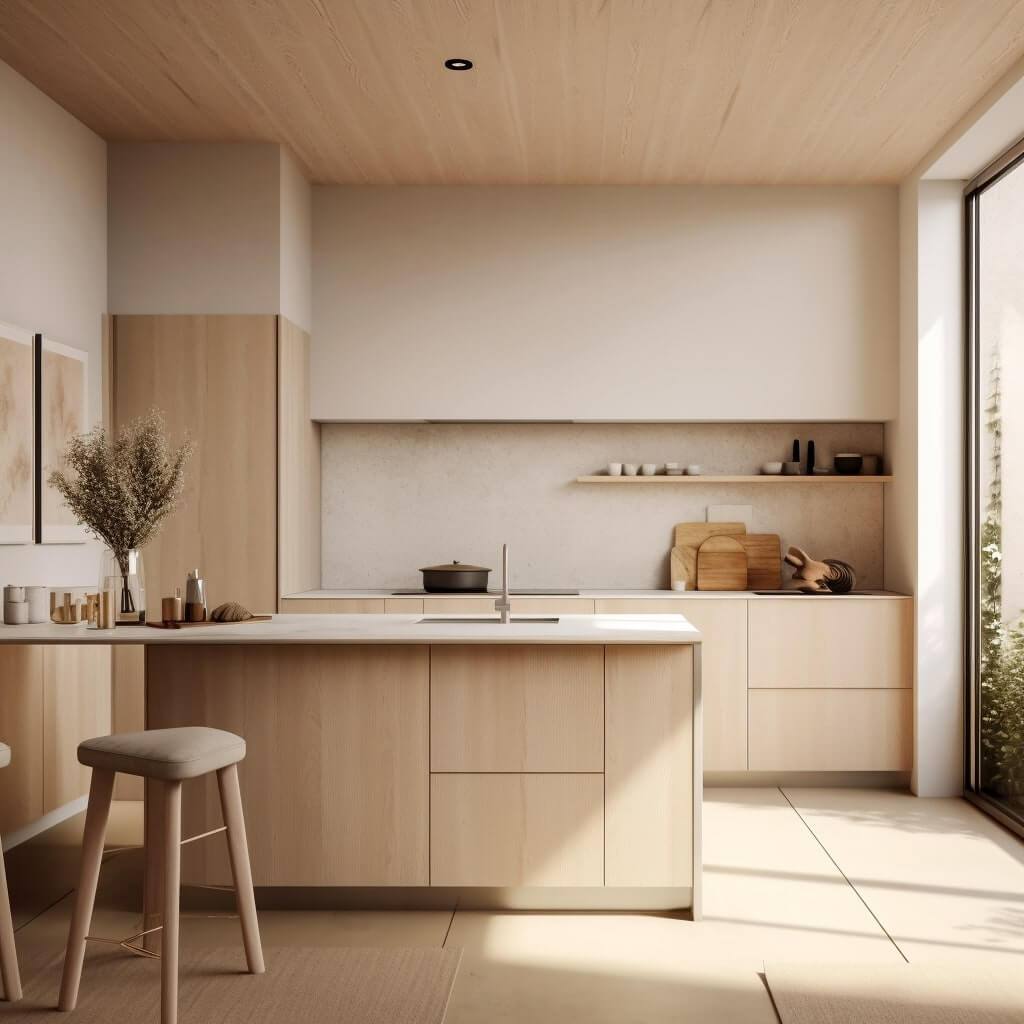
Japandi Kitchen Cabinets
Japandi kitchen cabinets should offer plenty of storage space, but without the clutter or overbearing presence that can sometimes accompany kitchen cabinetry.
For me, materials play a crucial role here.
I find that wood in light or medium tones work best, creating a warm, inviting feel. For a more modern touch, I go for matte black or white cabinets but only if it’s not too overpowering.
Japandi Kitchen Accessories
The key to selecting Japandi kitchen accessories is to remember that each item should serve a purpose – avoid clutter!
Consider things you’ll get the most use out of, like wooden cutting boards, ceramic dishware, and linen tea towels. These items not only serve a practical purpose but also add a touch of natural, organic beauty to your space.
Japandi Kitchen Remodel
I believe Japandi kitchen remodels should focus on creating a space that is both functional and beautiful.
This means using natural materials, incorporating plenty of storage, and maintaining a clean, minimalist aesthetic.
I start by choosing a neutral Japandi style color palette. Whites, grays, and natural wood tones work well. Then, I add in elements of nature, such as potted plants or a bamboo screen.
Consider open shelving too for displaying beautiful dishware, and closed cabinets for less attractive items.
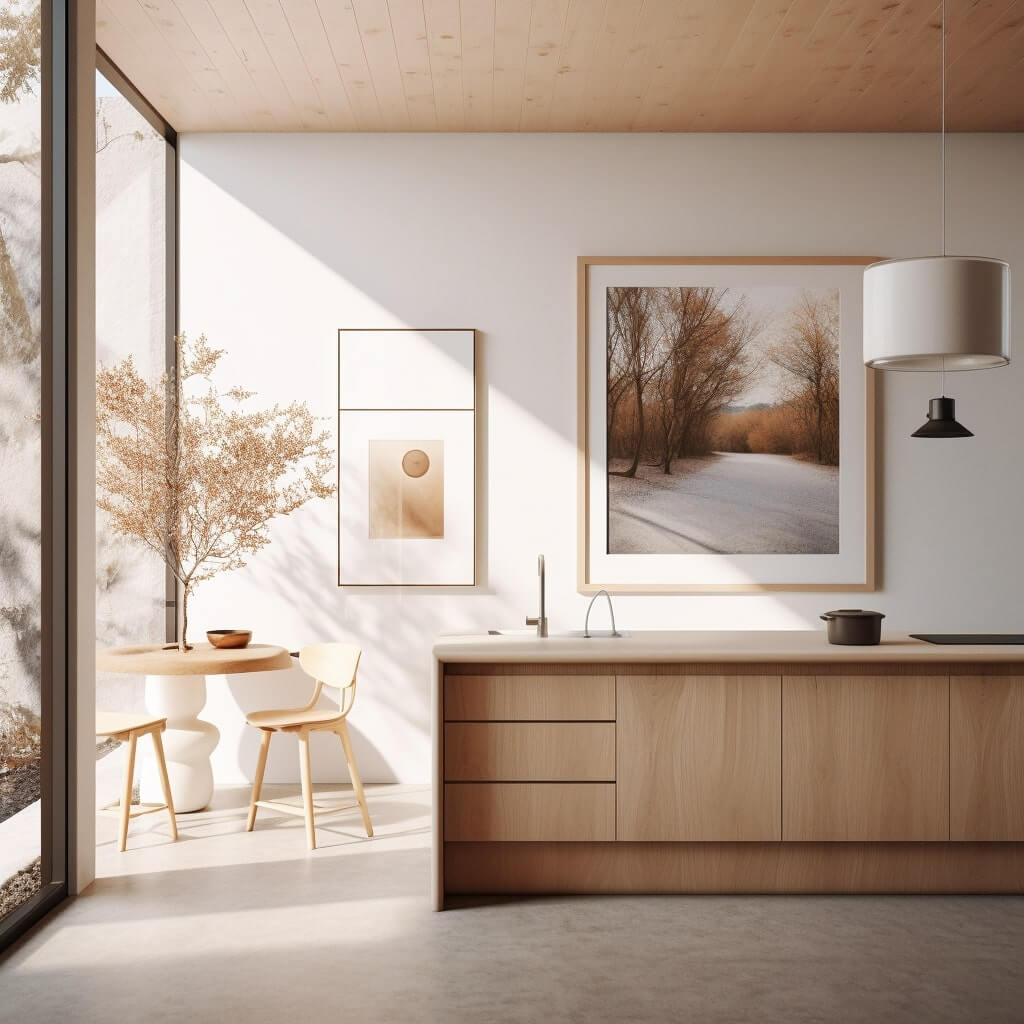
Japandi Kitchen Walls
I think the walls in your Japandi kitchen should serve as a neutral backdrop that allows the rest of your design elements to shine.
Light, neutral colors like whites, creams, or light greys are really good.
I think these shades not only create a sense of openness and space but also provide the perfect canvas for the rest of your Japandi design elements.
I often try adding texture through a natural stone backsplash or exposed brick.
Alternatively, a simple, sleek paint job can be equally effective in achieving the minimalist aesthetic Japandi design is known for.
Japandi Kitchen Living Room
I find that incorporating the Japandi style into your open kitchen living room design can create a seamless transition between the two spaces.
I usually use similar color schemes, materials, and styles in both areas to create a flow.
In terms of furniture, less is more.
I encourage choosing a few well-made, functional pieces that serve multiple purposes.
For instance, a wooden coffee table could double as a dining table.
Similarly, a comfortable couch in a neutral color can also serve as an extra sleeping space when needed.
You could also place a few potted plants around the room or hang botanical Japandi art prints on the walls.
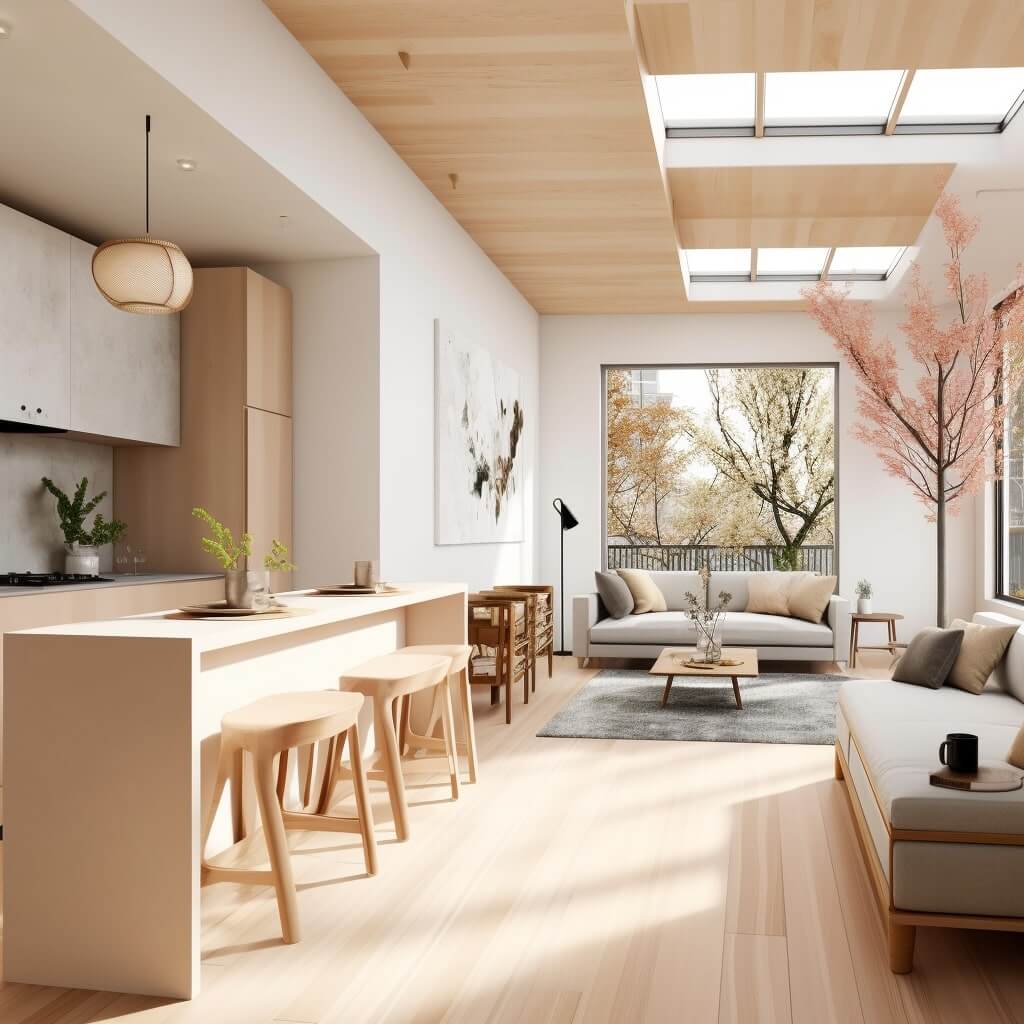
What is Japandi style kitchen?
A Japandi style kitchen combines the minimalist aesthetics of Japanese design with the functional simplicity of Scandinavian style. It features clean lines, natural materials, a muted color palette, and a balance between functionality and aesthetics.
What are the benefits of Japandi style?
Japandi style offers a calming, minimalist aesthetic that emphasizes functionality. It promotes sustainable living through the use of natural, ethically sourced materials. Japandi style also encourages a mindful lifestyle, enhancing mental wellbeing by creating clutter-free, tranquil spaces.
What are 5 types of kitchen design?
The five main types of kitchen design are: one-wall (or I-shaped), galley (or corridor), L-shaped, U-shaped, and island kitchens.
How to choose Japandi kitchen cabinets?
Choose Japandi kitchen cabinets that have clean lines and are made of natural materials, such as wood. The colors should be muted and natural, such as whites, greys, or light wood tones. The cabinets should offer functionality and minimalism.
How to choose Japandi kitchen tiles?
For Japandi kitchen tiles, select neutral, earthy tones that harmonize with the overall color scheme. Opt for natural materials, if possible. The tiles can be minimalist, with simple patterns or textures that add a subtle depth to the space.
What are some Japandi kitchen accessories?
Japandi kitchen accessories could include natural wood cutting boards, ceramic dishware in muted tones, minimalist cookware, simple linen tablecloths or napkins, and indoor plants. Functionality is as important as aesthetics, so each accessory should serve a purpose.


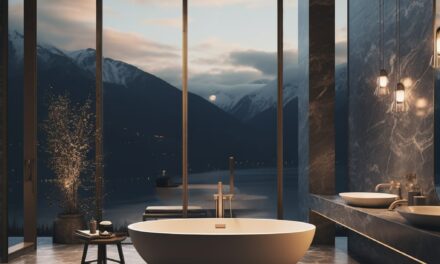




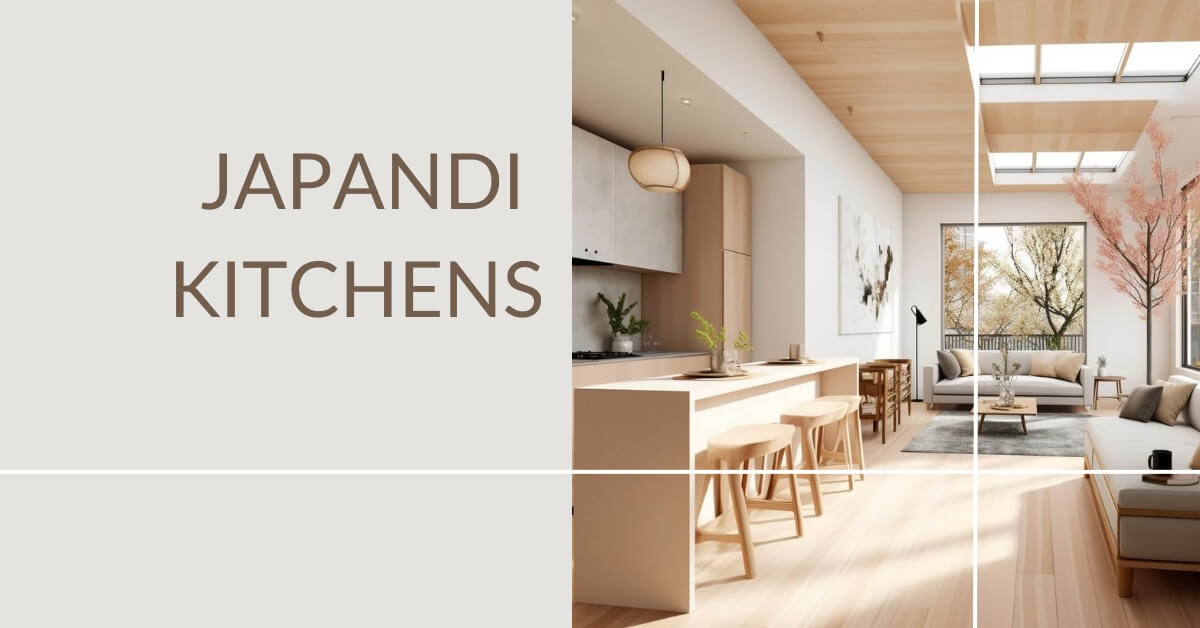
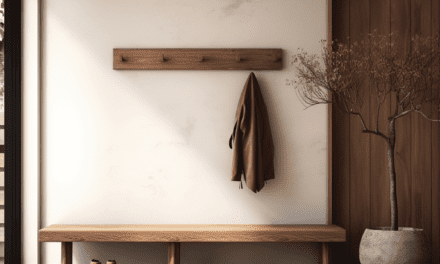


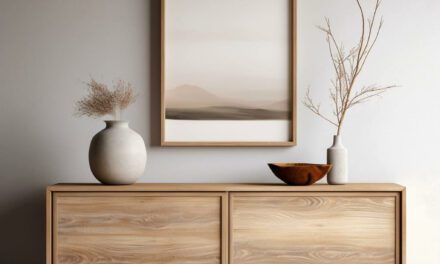
I feel this is one of the so much important info for me.
And i’m satisfied studying your article. However want to statement on some basic issues,
The web site taste is ideal, the articles is actually excellent : D.
Good job, cheers
This design is wicked! You definitely know how to keep a reader amused. Between your wit and your videos, I was almost moved to start my own blog (well, almost…HaHa!) Great job. I really loved what you had to say, and more than that, how you presented it. Too cool!